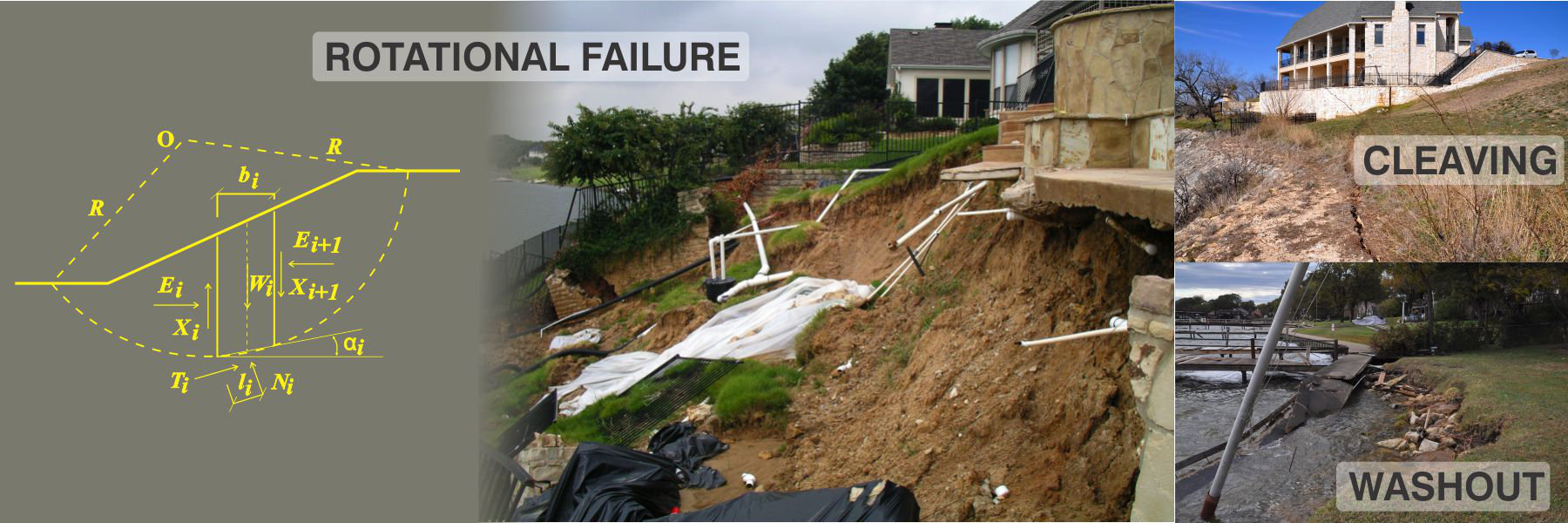
LANDSLIDES
Soil has an internal structure that allows it to retain its form even though the surface is rarely level and forces of gravity and water act upon it. Occasionally, natural forces acting on the mass of soil exceed the capacity of the material to resist the imposed load. When this happens, the soil mass moves in a manner generically called a landslide. Despite this general nomenclature, landslides can be categorized as falls, topples, slides, spreads or flows depending on the geometry of the land, the geological structure, and the nature of the forces that caused the soil mass to move.
Landslides are of academic concern unless the movement of the soil mass affects or threatens property (buildings, roads, bridges, or other structures).
When this occurs, some of the relevant issues addressed by the forensic investigation are:
- What is the geometry of the ground surface around the failure?
- What are the stratigraphy and physical characteristics of the subsurface?
- How has subterranean water flow changed?
- What construction has occurred at the site?
- Have landslide events occurred at the site in the past?
- Is the slide still active?
- What is the chronology of the event?
- What damage has the slide caused?
- What property is threatened by the event?
- How can the slide condition be arrested?
